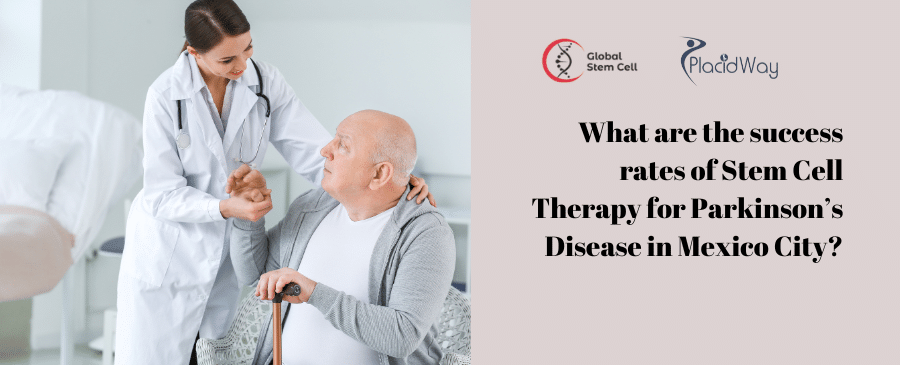
The Best Treatment for Autism in the World: Stem Cell Therapy
Table of Content
Autism Spectrum Disorder (ASD) is a complex neurodevelopmental condition that affects millions of individuals worldwide. Over the years, various treatments have been developed to help those affected by autism. Among these, stem cell treatment for autism has emerged as one of the most promising options. In this article, we will explore why stem cell therapy is considered the best treatment for autism in the world.
Understanding Autism Spectrum Disorder (ASD)
Autism Spectrum Disorder (ASD) is a group of developmental disorders that impact communication, social interaction, and behavior. While the exact cause of autism remains unknown, a combination of genetic and environmental factors are thought to contribute to its development. ASD affects people in various ways, and the severity of symptoms can range from mild to severe.
Common symptoms of autism include
Autism Spectrum Disorder (ASD) presents itself in various ways, with each individual experiencing a unique combination of symptoms. While no two people with autism are exactly alike, there are several common symptoms that are often observed in those affected by the condition
- Difficulty with communication and understanding social cues
- Repetitive behaviors and restricted interests
- Sensory sensitivities
- Challenges with motor coordination and attention
Current Treatments for Autism
While there is no known cure for autism, several interventions can help manage symptoms and improve the quality of life for those affected. Some of the most common treatments include:
- Behavioral therapy: Techniques such as Applied Behavior Analysis (ABA) and the Early Start Denver Model (ESDM) are used to teach social, communication, and functional skills.
- Occupational therapy: This therapy focuses on improving motor skills, coordination, and daily living activities.
- Speech therapy: This therapy helps individuals with ASD improve their communication and language skills.
- Social skills training: Group therapy sessions aim to teach individuals with autism how to interact effectively with others.
- Pharmacological interventions: Medications can help manage specific symptoms, such as anxiety, depression, or hyperactivity.
What Are Stem Cells?
Stem cells are unique cells with the ability to develop into various cell types in the body. They can be found in different tissues and organs, including bone marrow, blood, and the brain. Stem cells have two important properties:
Self-renewal: They can create more stem cells through cell division.
Differentiation: They can transform into specialized cell types, such as neurons, muscle cells, or blood cells.
There are different types of stem cells, including embryonic stem cells, adult stem cells, and induced pluripotent stem cells (iPSCs).
Stem Cell Therapy for Autism
In recent years, researchers have been exploring the potential of stem cell therapy for treating various medical conditions, including autism. Stem cell therapy for autism involves using stem cells to repair or regenerate damaged neural tissues and promote the development of healthy neural connections. This innovative approach has shown promising results in preclinical and clinical trials, making it one of the most exciting treatment options for autism.
How Stem Cell Treatment Works
Stem cell treatment for autism typically involves the following steps:
- Stem cell extraction: Stem cells are obtained from the patient or a donor. The most common sources are bone marrow, umbilical cord blood, or adipose tissue.
- Stem cell processing: The extracted stem cells are processed to isolate and purify the desired cell population.
- Stem cell administration: The processed stem cells are then delivered to the patient through intravenous infusion, intrathecal injection, or other methods.
- Follow-up: Patients are closely monitored to evaluate the effectiveness of the treatment and to ensure their safety.
The stem cells, once administered, can migrate to the affected areas in the brain, where they have the potential to:
- Replace damaged neurons and support cells
- Promote the formation of new neural connections
- Reduce inflammation and stimulate the body’s natural repair mechanisms
- Modulate immune system response
Benefits of Stem Cell Treatment for Autism
Stem cell treatment for autism offers several potential benefits, including:
- Improvement in communication and language skills
- Enhanced social interaction and understanding of social cues
- Reduction in repetitive behaviors and restricted interests
- Better motor coordination and sensory processing
- Improved overall cognitive function and quality of life
It is important to note that individual results may vary, and not all patients will experience the same degree of improvement.
Real-World Examples of Successful Stem Cell Treatment
Numerous case studies and clinical trials have demonstrated the potential of stem cell therapy for autism. Some examples include:
- A study published in Stem Cells Translational Medicine reported significant improvements in children with autism who received umbilical cord blood-derived stem cells. The children showed enhanced communication, social interaction, and cognitive function after treatment.
- Another study published in Cell Transplantation found that children with autism who received autologous bone marrow-derived stem cells exhibited improvements in communication, social interaction, and behavior.
- A case report published in Frontiers in Psychiatry documented the successful treatment of a young adult with autism using intranasal administration of adipose-derived stem cells. The patient showed significant improvements in social and cognitive functioning.
Potential Risks and Limitations
Despite the promising results, stem cell therapy for autism is still an emerging field, and there are potential risks and limitations to consider:
- The long-term safety and efficacy of stem cell treatments for autism have not been fully established.
- Some individuals may not respond to the treatment or may experience only minimal improvements.
- The potential for immune reactions, infection, or other complications exists, although these risks are generally considered low.
- The cost of stem cell therapy can be prohibitive for many families, and insurance coverage may be limited.
Selecting the Right Stem Cell Therapy Provider: Factors to Consider
As stem cell therapy for autism becomes more widely available, it’s essential to choose the right provider for treatment. Here are some key factors to consider when selecting a stem cell therapy provider:
- Experience: Look for a provider with extensive experience in stem cell therapy, particularly for autism or related neurological conditions.
- Accreditation: Ensure that the provider is accredited by relevant regulatory bodies and follows strict guidelines for stem cell treatment.
- Patient testimonials: Seek out testimonials or case studies from previous patients who have undergone stem cell therapy for autism.
- Customized treatment plans: A good provider will develop a personalized treatment plan based on the unique needs and condition of the patient.
- Follow-up care: Choose a provider that offers comprehensive follow-up care and support to monitor the patient’s progress and address any concerns that may arise after the treatment.By carefully considering these factors, you can select a stem cell therapy provider that offers the best chance of success for treating autism.
Addressing the Ethical Considerations of Stem Cell Therapy for Autism
While the potential benefits of stem cell therapy for autism are undeniable, it’s crucial to address the ethical considerations surrounding the use of stem cells. These concerns often revolve around the source of stem cells, especially when it comes to embryonic stem cells.
Researchers and medical professionals must adhere to strict ethical guidelines to ensure that the stem cells used for treatment are obtained and used in a responsible manner. Alternative sources of stem cells, such as adult stem cells and induced pluripotent stem cells (iPSCs), have been developed to address these ethical concerns while still harnessing the potential of stem cell therapy for autism.
Conclusion
In conclusion, stem cell treatment for autism is a promising therapy that offers the potential for significant improvements in communication, social interaction, and overall quality of life for individuals with ASD. While more research is needed to establish the long-term safety and efficacy of this approach, the current evidence suggests that stem cell therapy may be one of the best treatment options for autism in the world.






